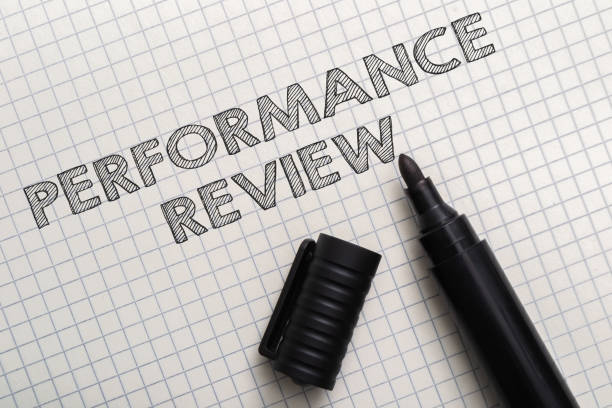A comprehensive guide on crafting effective performance review templates for professional evaluations

Introduction
Employee evaluations play a pivotal role in the corporate world. They provide feedback, celebrate achievements, and identify areas for improvement. Yet, the effectiveness of these evaluations heavily depends on the framework used: the performance review template. This guide delves deep into what constitutes an exemplary performance review template, ensuring that both employees and organisations benefit from this crucial process.
Performance Review Template: A Quick Overview
The performance review template isn’t just a form. It’s a tool that paves the way for constructive conversations between managers and their team members. A robust template will incorporate various elements, ensuring that the review process is comprehensive and beneficial.
Benefits of Using a Performance Review Template
– Consistency Across Evaluations: With a set format, managers can evaluate all employees on the same criteria, leading to fair and unbiased assessments.
– Clear Communication: Templates ensure that both parties understand what’s being discussed, eliminating any potential confusion.
– Time-Efficient: Prepared templates streamline the review process, saving both the manager and the employee time.
Key Components of an Effective Performance Review Template
1. Employee Information: This basic section captures the employee’s name, department, designation, and review period.
2. Goals and Objectives: Reflect on the targets set during the previous review and measure the employee’s achievements against them.
3. Skill and Competency Assessment: Evaluate the individual’s skills in relation to their job requirements.
4. Feedback from Peers and Subordinates: Gather insights from colleagues for a holistic review.
5. Development Plans: Outline areas of improvement and strategies to address them.
6. Achievements and Recognition: Celebrate the employee’s notable accomplishments during the review period.
7. Future Goals Setting: Collaboratively decide on objectives for the upcoming review period.
8. Training and Development Needs: Identify any upskilling or training the employee might require.
9. Manager’s Comments: Provide space for the manager to share observations, feedback, and recommendations.
10. Employee’s Feedback: Allow the employee to share their perspective, concerns, or feedback about their role, team, or organisation.
Customising Your Performance Review Template
While using a template offers structure, it’s essential to tailor it to fit the unique needs of your organisation. Adjust criteria, scales, and sections to reflect your company’s culture, values, and specific job roles.
Digital Evolution: Performance Review Software
The digital age has introduced software that goes beyond the traditional paper-based templates. These platforms offer dynamic forms, analytics, and even AI-driven insights, transforming the way performance reviews are conducted.
The Role of Feedback in the Performance Review Process
Feedback, both positive and constructive, is the backbone of the review process. A well-designed template will guide managers in delivering feedback that’s clear, specific, and actionable.
Common Mistakes to Avoid When Using a Performance Review Template
– Overcomplicating the Template: While thoroughness is essential, avoid making the template so complex that it becomes cumbersome.
– Neglecting Employee Input: Performance reviews should be two-way conversations. Ensure the template has space for employee feedback.
– Being Vague: The aim is to provide clarity. Avoid generic statements and aim for specificity.
Performance Review Best Practices
– Regular Updates: Instead of annual reviews, consider quarterly or bi-annual evaluations for more timely feedback.
– 360-Degree Feedback: Incorporate insights from colleagues, subordinates, and even clients for a comprehensive review.
– Training for Reviewers: Equip managers with the skills to conduct reviews effectively.
Conclusion
The performance review template is more than just a document; it’s a pivotal tool that influences employee growth, satisfaction, and, ultimately, the success of an organisation. By carefully selecting and customising your template, you can set the stage for meaningful, productive conversations that drive both individual and organisational growth.

FAQs
- What is the main purpose of a performance review template?
The primary purpose is to provide a structured framework for evaluating an employee’s performance, achievements, and areas for improvement.
- How often should performance reviews be conducted?
While traditionally held annually, many organisations now opt for quarterly or bi-annual reviews for more timely feedback.
- Can a performance review template be used for all roles in an organisation?
While the foundation remains similar, it’s best to customise the template to cater to the specific requirements of each role.
- Is feedback from colleagues necessary in a performance review?
While not mandatory, 360-degree feedback from peers, subordinates, and sometimes clients provides a holistic view of an employee’s performance.
- How can managers make the review process more effective?
By undergoing training, conducting regular reviews, and ensuring open two-way communication with employees.
- Do digital performance review platforms replace the need for a template?
No, they offer advanced features and analytics but are based on the foundational principles of a performance review template.
External Links/ Sources:
